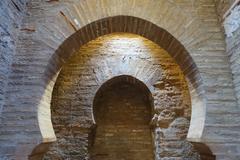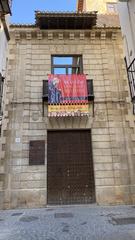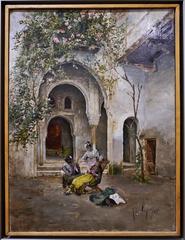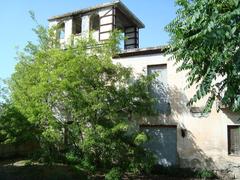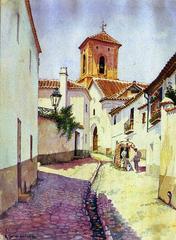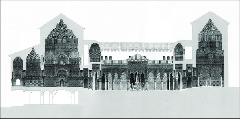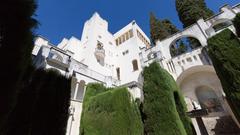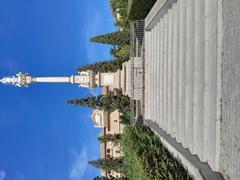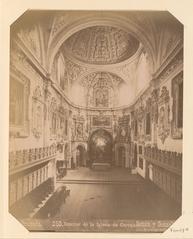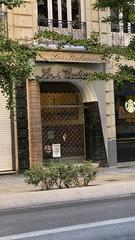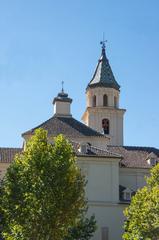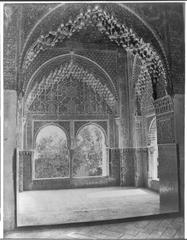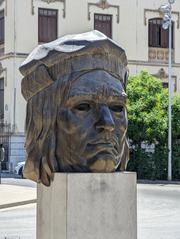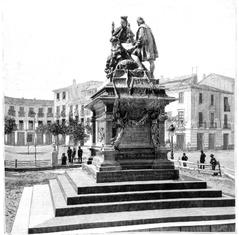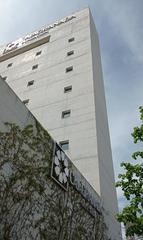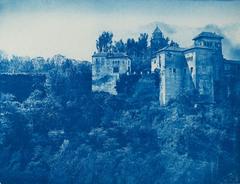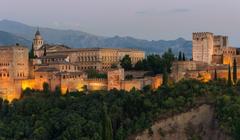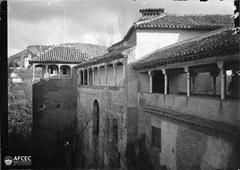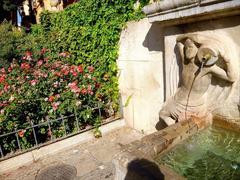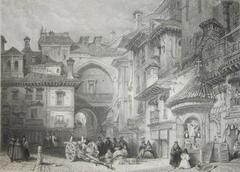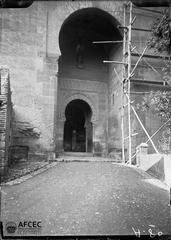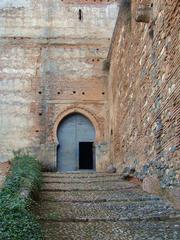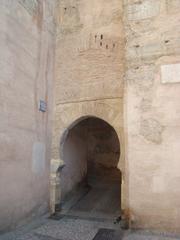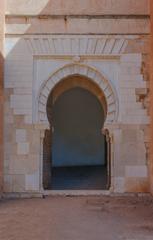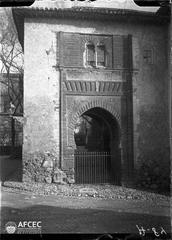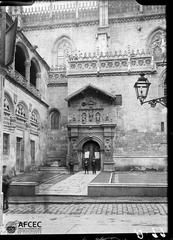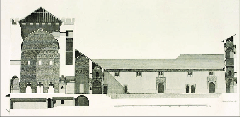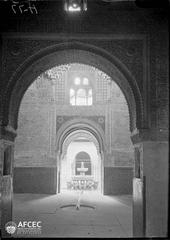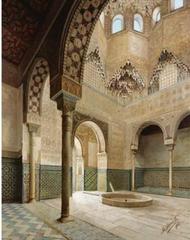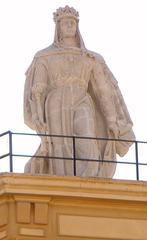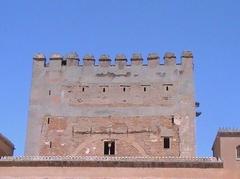Palacio de la Cuesta de Gomérez: Visiting Hours, Tickets, and Comprehensive Guide to Granada’s Historical Jewel
Date: 03/07/2025
Introduction
Located along Granada’s iconic Cuesta de Gomérez, the Palacio de la Cuesta de Gomérez is one of the city’s hidden architectural gems. Perched on the main ascent from the city center to the Alhambra, this Renaissance palace stands as a testament to Granada’s transition from Moorish rule to Christian aristocracy following the Reconquista. The palace’s harmonious blend of Renaissance and Mudéjar architecture, its role as a social and urban landmark, and its evolving function—currently being restored into a luxury boutique hotel—make it a site of enduring historical and cultural significance.
Protected as a Bien de Interés Cultural (BIC), the palace invites visitors to discover Granada’s noble heritage through its ornate façade, tranquil patios, and proximity to major monuments like the Puerta de las Granadas and the Alhambra. This guide delivers all the essential information—history, architecture, visiting hours, ticketing, accessibility, travel tips, and nearby attractions—to ensure a rewarding visit for architecture enthusiasts, history lovers, and curious travelers alike. For the most current details, always check the official Granada tourism website and related heritage sources (Wikimedia Commons, Albaicín Granada).
Table of Contents
- Introduction
- Historical Context and Origins
- Architectural Highlights
- Cultural Significance
- Visitor Information
- Nearby Attractions
- Visual Gallery
- Frequently Asked Questions (FAQ)
- Summary and Final Tips
- Sources
Historical Context and Origins
The Palacio de la Cuesta de Gomérez was constructed in the mid-16th century, closely following the Christian conquest of Granada in 1492. Its location on the Cuesta de Gomérez—a vital thoroughfare linking the city center with the Alhambra—underscored its importance among the city’s nobility. Built by influential families such as the Mesía and Pérez de Herrasti, the palace not only symbolized Granada’s integration into Spanish and Renaissance culture but also marked the city’s social transformation. The site’s status as a Bien de Interés Cultural (BIC) further highlights its architectural and historical value (Wikimedia Commons).
Architectural Highlights
Renaissance and Mudéjar Features
The palace’s design fuses Renaissance symmetry and balance with Andalusian Mudéjar elements. The façade, with its careful proportions and classical details, illustrates 16th-century trends, while interior patios and aljibes (water cisterns) reflect longstanding local traditions. Noteworthy features include:
- Façade: Ashlar masonry, grand portals, and understated Renaissance ornamentation.
- Courtyards: Andalusian patios with arcades and historic cisterns (pilonesdegranada.blogspot.com).
- Interiors: Artesonado (carved wooden ceilings) and decorative tiles.
Location and Urban Integration
Standing near the Puerta de las Granadas (1536) by Pedro Machuca, the palace forms a symbolic gateway from the city to the Alhambra. The Cuesta de Gomérez itself is a semi-pedestrian, tree-lined street known for artisan workshops and vibrant cultural life (planaje.com).
Cultural Significance
Social and Historical Symbolism
The palace is closely associated with Granada’s noble families and the city’s Renaissance transformation. Its construction marked a new era following the Reconquista, symbolizing the integration of Italianate styles and courtly culture. Over time, the palace adapted to various uses—from noble residence to communal housing—mirroring Granada’s evolving society.
Heritage Conservation and Public Access
Listed as a Monumento Histórico-Artístico since 1982, the palace is protected by Spanish heritage laws (Spanish Ministry of Culture). Its ongoing restoration aims to preserve historical elements while opening select areas to the public for guided tours and cultural events at least one day per week (ideal.es). This balance ensures that the site remains a living part of Granada’s collective memory and urban landscape.
Visitor Information
Visiting Hours
- Public Access: Select areas are open to the public one day per week (typically Tuesday or Thursday), from 10:00 AM to 5:00 PM. Hours may vary seasonally; check the official Granada tourism website for updates.
Tickets and Admission
- Entry Fee: Expected to be €5–€8 for adults, with reductions for students, seniors, and free access for children under 12.
- Booking: Tickets can be purchased online through the official portal or at the entrance, though advance booking is recommended during peak periods.
Accessibility
- The palace is located on a steep, cobblestone street. Wheelchair access is available at the main entrance; some interior areas remain challenging due to heritage constraints. Assistance can be arranged upon request.
Guided Tours and Special Events
- Guided tours provide insights into the palace’s architecture and history, focusing on restoration efforts and Granada’s Renaissance past. Special events and exhibitions are held throughout the year, particularly during cultural festivals.
Travel Tips
- Footwear: Wear comfortable shoes for the uphill walk.
- Best Timing: Early mornings and late afternoons offer the best light and fewer crowds.
- Photography: The façade, courtyards, and views of the Alhambra are highlights for photographers.
Nearby Attractions
The palace’s prime location makes it an ideal starting point for exploring Granada’s historic core:
- Alhambra: The legendary fortress and palace complex.
- Puerta de las Granadas: Renaissance gate and city landmark.
- Torres Bermejas: Moorish defensive towers (Mapcarta).
- Albaicín: The Moorish quarter famous for its winding streets and viewpoints.
- Sacromonte: Known for its cave houses and flamenco heritage.
The Cuesta de Gomérez itself is lined with traditional guitar workshops and souvenir stores, adding to the area’s artisanal charm (Nomads Travel Guide).
Visual Gallery
Images include descriptive alt tags for enhanced SEO and accessibility.
Frequently Asked Questions (FAQ)
What are the Palacio de la Cuesta de Gomérez visiting hours?
Selected areas are open one day per week, generally 10:00 AM to 5:00 PM. Check official sources for current schedules.
Is the palace interior open for tours?
Yes, on designated public access days. Guided tours are recommended.
Are tickets required?
Yes, for interior access. The exterior and Cuesta de Gomérez street are open at all times.
Is the site wheelchair accessible?
Partial access is available, but the slope and historic features may pose challenges.
What else can I see nearby?
The Alhambra, Puerta de las Granadas, Albaicín, Sacromonte, and numerous artisan workshops.
Summary and Final Tips
The Palacio de la Cuesta de Gomérez is a distinguished emblem of Granada’s Renaissance and Mudéjar heritage. Its architectural splendor and strategic location near the Alhambra make it a compelling stop for those seeking a deeper understanding of the city’s history. As restoration continues, the palace will offer increased public access through guided tours and cultural events, ensuring its continued role as a living monument.
Visitor Tips:
- Book tickets in advance for guided tours.
- Pair your visit with a walk along Cuesta de Gomérez for a full cultural experience.
- Consider combining your palace visit with exploration of the Alhambra and Albaicín.
- For up-to-date information, consult the Granada Tourism Website and related heritage sources.
Sources
- Wikimedia Commons: Palacio de la Cuesta de Gomérez
- Albaicín Granada: Palacio de la Cuesta de Gomérez
- Official Granada Tourism
- Nomads Travel Guide: What Can You See in the Alhambra for Free?
- Ideal.es: Palacio de la Cuesta de Gomérez Conversion to Five-Star Hotel
- Mapcarta: Torres Bermejas
- Spanish Ministry of Culture
For an interactive guide, ticket information, and travel tips, download the Audiala app and follow us on social media. Start your Granada adventure at the Palacio de la Cuesta de Gomérez and discover the layers of history embedded in its walls.

